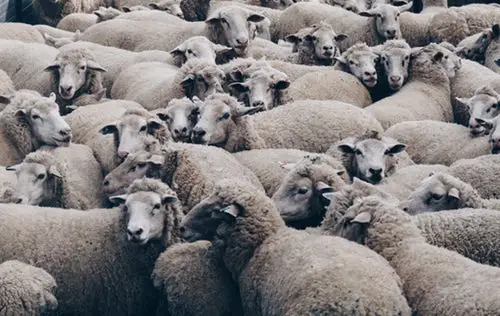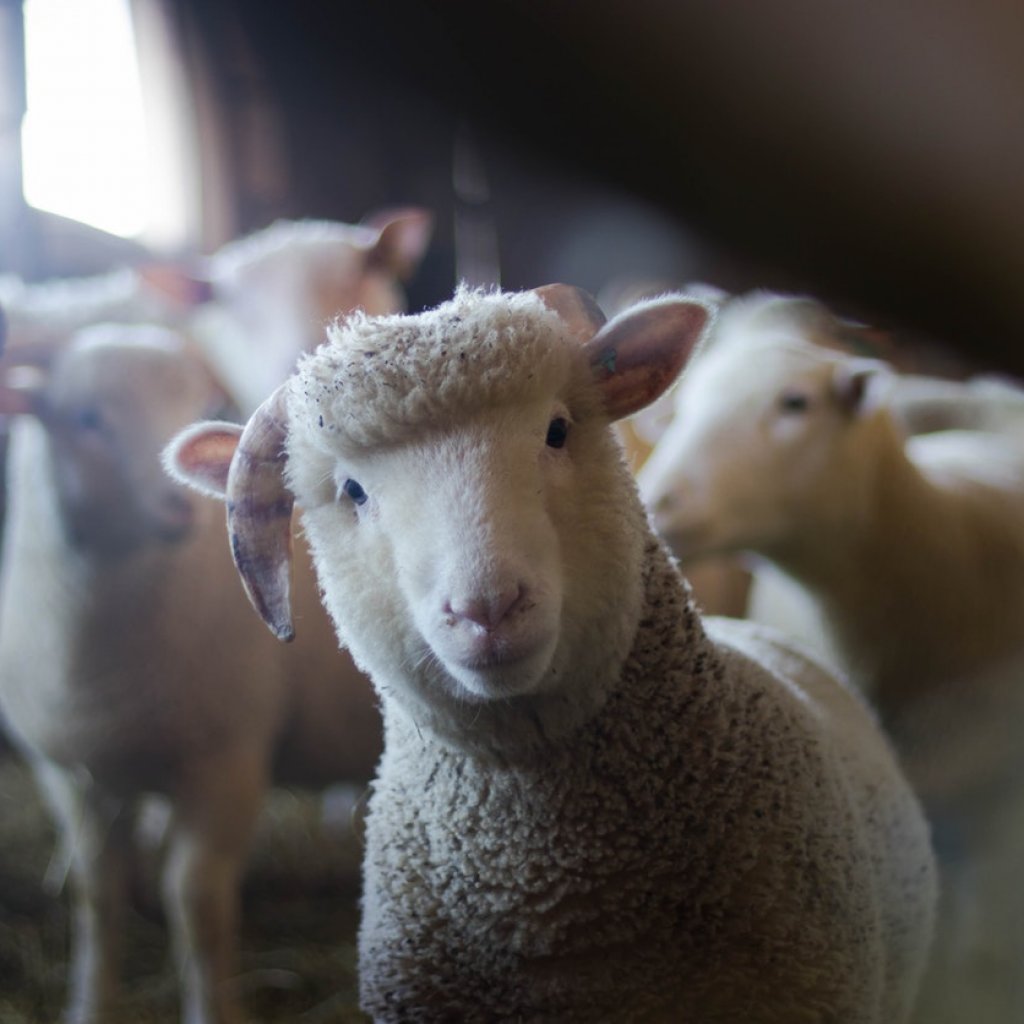Raising Sheep: Everything You Need to Know
 Raising Sheep: Everything You Need to Know
thegearhunt.com
Raising Sheep: Everything You Need to Know
thegearhunt.com
Are you aware that when it comes to livestock, no type has more breeds than sheep except for chickens? You might never have thought about getting a sheep or 12, but the creatures are actually quite versatile.
Hopefully, once you have read this article, you will know what great little animals they are and will think about getting a few. If you do, you will have an additional resource at the tips of your fingers, and that one is completely adorable.
Why Sheep?
There are quite a few reasons that people raise sheep. Here is a quick look at a few of them.
Wool
Many people raise sheep for the wool that they provide. Some of those people will keep the wool from the sheep as a source of free material when they want to create their own clothing.
However, when it comes to wool, there is also the option to sell it. They can either sell it raw, make it into yarn, or make clothes from it and sell the clothes. This is just one method of creating income in an effort to being self-sufficient.

Meat
There are many people who enjoy eating mutton and lamb. If you buy it at your local grocery store, it can be quite pricey. By raising this meat on their own, people will have an additional source of meat as well as another way to generate income.
Milk
When it comes to a source of dairy, sheep might not be the first animal that comes to mind. However, they can be a wonderful source of dairy. At, least, if the land they will be on is small – they don’t produce an abundance of it.
For those people who don’t have the massive amount of acreage it takes to raise cows, sheep can be an amazing source of raw dairy products.
Sheep Varieties to Raise
 Surely you have heard the old adage about sleep and counting sheep. There is actually a reason for that. The amount of varieties of sheep is so large that you could count for quite a long time and have a difficult time naming all of the various breeds.
Surely you have heard the old adage about sleep and counting sheep. There is actually a reason for that. The amount of varieties of sheep is so large that you could count for quite a long time and have a difficult time naming all of the various breeds.
That isn’t even taking into account that you might count individual sheep. Wow, that would be an insurmountable task!
With that in mind, I will break sheep varieties down into a few categories for you.
Fine Wool
These are the sheep you might be more used to seeing. The wool they produce is quite fine and they account for about half of the world’s population of wool sheep. Even if they didn’t. they are still cuties and will put a smile on your face.
Long Wool
This type of sheep is typically found in climates that are damp and cool. They populate areas like Scotland and England. They are raised because their wool is quite thick. They produce a type of wool that has a large diameter, and this is also what makes them ideal for climates that are cooler.
Medium Wool Meat Varieties
Sheep in this category produce wool that is medium size. That being said, they are typically raised for meat, but they only account for about 15% of the population of sheep in the world.
These might look familiar to you too. Whatever the case, this is a dual-purpose sheep that would be great to have on your land.

Carpet Wool
These are the sheep that produce the wool that carpet is made from. They actually have 2 different layers of wool due to the fact that they can be found in harsher climate. The outer layer is quite coarse and thick. This is what is shaved off and used to make durable and thick carpets.
Hair Sheep
This is a beautiful animal and they are sort of reminiscent of goats in a few ways. Instead of wool, these sheep have hair.
They have this hair as opposed to wool because they are native to hotter climes, like Africa and the Caribbean. However, interest in growing this breed is increasing and they currently hold first place on the US registry list. Interest in this type of sheep is growing in places like Europe and Australia too.
Fat Tail Sheep
These are fully little sheep. The reason they are called this is that their bottoms are fat. Essentially, this is due to them flourishing in extreme climates and this leads to them storing quite a bit of fat in their tails.
They are typically raised in desert climates, so they need to have the ability to store up reserves of food. There are only a few in the States, but that is because they have only recently been introduced here. This is a breed of sheep that is predominately raised for the production of milk and meat.
Short Tail
And so, we move from the sheep with big bottoms to the ones with small ones. The tails of these sheep are so short that they never need to be docked. They originated in the north of Europe. These sheep are quite fertile and are capable of reproducing a LOT. This makes them a good choice for those looking for a larger flock to use as a source of meat, or even for breeding.

Prolific Breeds
To me, the ones that stand out when it comes to this variety are the Finn sheep. They are quite well-known for being naturally great when it comes to reproducing. As mentioned just a second ago, if you need a lot of sheep as a source of meat, or if you plan to breed them for cash, this is a breed you might want to consider.
Primitive Breeds
These are the breeds that have managed to survive without needing to much influence from humans. If you happen to live in an area that is rugged, and are looking for animals that are hardy, this type of sheep is one to be considered. That said, it is natural for sheep from these breeds to look different occasionally, but they will all show the same characteristics when it comes to survival.
What Sheep Need
If you have ever raised goats, then you will already be a step ahead. Sheep and goats are quite similar. They are social creatures who have basically the same requirements or needs. That being said, a sheep does need a little bit of additional care due to their wool. To that end, here is a quick look at the basic needs of a sheep.
Shelter
Every animal will need shelter. If you want to raise them as livestock, it will be your responsibility to provide them with it. Sheep are no different in this respect. All that you will need to give them is a basic sort of structure that they can go into when the weather is inclement. A fort or a three-sided barn with a bit of straw bedding will be ideal. It will keep them protected from the elements and the straw will keep them warm.
Fences
You will need a fence that is about 5 feet tall if you want the sheep to remain where you put them. However, if there are predators in your area, you might want to make it a bit taller. This is because the taller the fence is, the more difficult it will be for some of the predators to be able to get to your sheep. And sheep happen to be a fave food for some predators.
You will also need a separate fenced area for sheep who get sick.

Hay or Pasture
If there isn’t a lot of room for the sheep to graze, you will have to provide them with hay and a hay feeder. You can actually build a hay feeder that is waste free. Sheep also tend to graze on grass and plants that might be in their area.
If you do have a pasture, the sheep will only need the grass there. You might want to supplement that with hay when the weather turns cold and the grass dies. Just ensure that the hay you feed them doesn’t get mold in it if you store it through the winter. This is toxic for sheep.
Additionally, you shouldn’t feed the sheep any sort of grain unless the specific grain has been formulated especially for sheep. A lot of grains contain copper, and this is not a good thing for sheep.
Salt Blocks
Goats and sheep both need a few certain minerals. If you give them a salt block for them to lick, they will be able to get the minerals they need without getting too much of them.
You can get a salt block and the holder for it at most agricultural stores.
Water
Sheep are just like every other creature on earth. They need water. You will need to ensure that they have a clean source of water.
General Sheep Care Tips
Hoof Trimming
Just as you would with goats, you need to keep your sheep’s hooves trimmed. If you don’t. tit can make them lame. Just keep in mind that as an alternative, you can provide them with cement blocks that they can prance around on to keep their own hooves trimmed. All you need to do is to remember to change the blocks regularly because the sheep will dull them down.
Shave the Sheep
If the sheep you have purchased is a variety that produces wool, you will need to shear them at least on an annual basis. If you bought sheep that have thick wool, you might want to shave them twice a year.
Clean Them
Sheep will get dirty. You can imagine that living out in the open and having all of that wool, it can be a challenge to keep them clean. You will need to clean the area around their rear ends and any other area that might be matted or caked with mud. They will naturally have a difficult time keeping their own waste out of all of that wool.
When you are shaving the area of their rear ends and down the legs, this is known as crutching. When you clean the area underneath their belly, this is known as dagging the sheep.
Worming Them
As with most other livestock, your sheep will need to be wormed. This needs to be done twice each year. Some people get vets to do this. There is another option though.
You can use something called diatomaceous earth to worm the sheep. This is an all-natural solution that can be purchased at an agricultural store or online and it is very cost-effective. Just sprinkle a bit in the sheep’s food and allow them to eat it. It can be used for dogs, chickens, and goats too.
Those are the basics when it comes to raising sheep. Hopefully, you will feel a bit more informed and at the point of considering making a place on your land for these furry little critters.
Sources
- You Tube, Raising Sheep on the Homestead
- Wiki How, How to get Started in Raising Sheep
- Sheep 101, A Beginner’s Guide to Raising Sheep
















